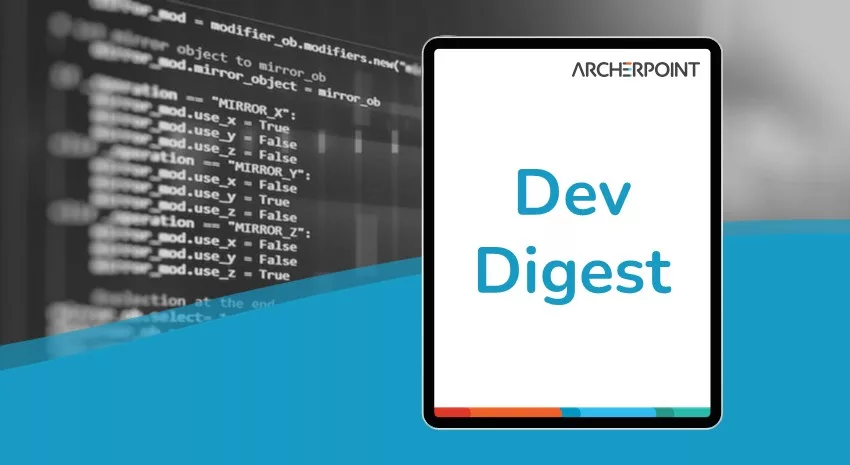Dynamics NAV / Business Central Developer Digest - Vol 355

Turning on Lot Specific Tracking and Lot Warehouse Tracking from Item Tracking Code Card, extensibility, redesign, alignment invoice post, and more can be found in this edition of Developer Digest.
The Dynamics NAV and Business Central community, including the ArcherPoint technical staff, is made up of developers, project managers, and consultants who are constantly communicating, with the common goal of sharing helpful information with one another to help customers be more successful.
As they run into issues and questions, find the answers, and make new discoveries, they post them on blogs, forums, social media…so everyone can benefit. We in Marketing watch these interactions and never cease to be amazed by the creativity, dedication, and brainpower we’re so fortunate to have in this community—so we thought, wouldn’t it be great to share this great information with everyone who might not have the time to check out the multitude of resources out there? So, the ArcherPoint Microsoft Dynamics NAV Developer Digest was born. Each week, we present a collection of thoughts and findings from NAV/BC experts and devotees around the world. We hope these insights will benefit you, too.
Business Central Data Administration
In his latest blog post, Stefano Demiliani shares the answer to a question about environment capacity: “Related to the new storage policy post I’ve written some days ago, some of you have asked if it’s possible to check with more details the capacity of each environment (like space used for every table and for every company) and also if it’s possible to clean up data on certain tables without creating custom tasks.” Read his answer on his blog.
Developer Tip of the Day: Table Fields
Kyle shares: “Developer Tip of the Day: Table Fields
You can set rules for the number of decimal places and for min and max values allowed for a Decimal table field:
field(40; “Payment Discount %”; Decimal)
{
Caption = ‘Payment Discount %’;
DecimalPlaces = 0 : 5;
MaxValue = 100;
MinValue = 0;
}
Transferring a File From a Local File System to a Docker Container
Tom H informs: “Today, I learned how to transfer a file from your local filesystem into a Docker container.
Step 1: Stop the container using the “docker stop [containername]” command.
Step 2: Transfer the file using the “docker cp [local filepath and name] [containername]:[virtual filepath and name]” command.
Step 3: Restart the container using the “docker start [containername]” command.
Watch the YouTube video tutorial:
Turning On Lot Specific Tracking and Lot Warehouse Tracking from the Item Tracking Code Card After Entries Exist
Ian B asks: “Has anyone turned on Lot Specific Tracking and Lot Warehouse Tracking from the Item Tracking Code Card after entries exist? I know it’s not supposed to work this way but is it possible? If so, any tips?”

David K responds: “We have done this mod a bunch of times. Long story short: You need a processing report to update all the existing ILEs for the Item(s) to have a Lot Number, but also check to make sure nothing is shipped/received not invoiced. Typically, we allow the users to enter a value on the ReportOptions page before running the processing report (we recommend a value called BLANK so you can determine what is old versus new), and have them select which Item Tracking Code they want to assign.”
Chris K adds: “Pretty much what David said. Everything (open and closed) needs a Lot No. populated. Because the way things are applied differently, it has to be the same lot. If you want to load your open inventory to actual lots, you can use the reclass journal after the update.”
Extensibility, Redesign and Alignment of Invoice Post–Buffer Across Countries
Matt T advises: “Take note of the next major change coming your way–not required until April 2023, but available October 2021. This is not dissimilar from the Sales Price change, now required by April 2022. Also notice the start of a pattern for these major changes: They are all using interfaces for extensibility. These are not intuitive for most NAV/BC developers, so I highly encourage everyone to learn the basics of them before you get put on a project that uses them.”
